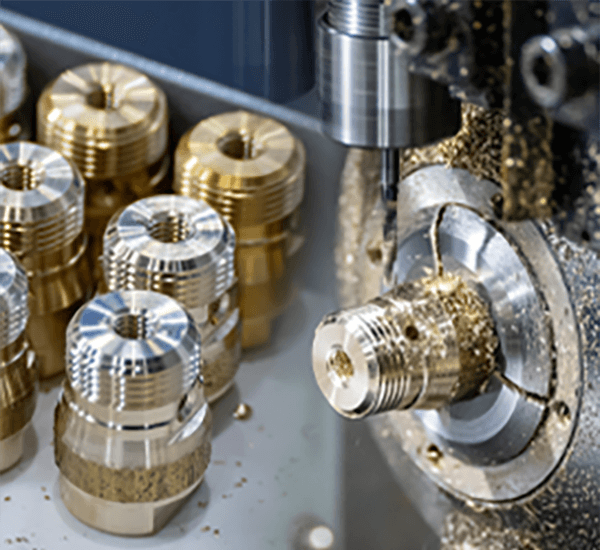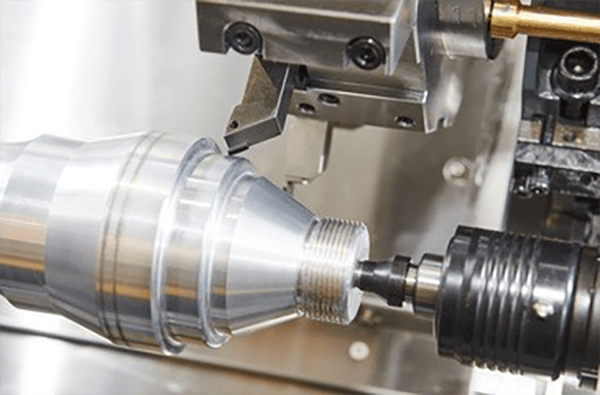
Obtaining designated surface condition on a machined article stands as fundamental.
- Blueprint callouts define exact texture requirements for manufactured pieces
- Engineers often specify Ra (average roughness) to numerically define surface irregularity
- Familiarity with surface callouts is vital for achieving performance targets
- Prescribed surface characteristics govern lubrication, abrasion, and longevity
- Accurate interpretation of callouts is required to realize the targeted surface
CNC Machining and Precision Engineering

Robotic-assisted machining defines a modern manufacturing practice using computerized programs to drive machines that cut complex shapes with high precision.
- Programmed mills and lathes produce top-tier parts across material types
- CNC adaptability suits industries including aerospace and automotive sectors
- Automated machining provides consistent reproducibility for uniform components
From early-stage prototyping through mass manufacturing CNC machining underpins modern fabrication
Understanding CNC Machine Specifications
Grasping machine spec language may feel tough at first
Still a modest foundation of know-how combined with structure allows navigating specs
Set out by finding key metrics: spindle speed, feed settings, positional accuracy, work envelope, controller
All attributes together shape the system’s production performance.
Example: increased spindle revolutions aid soft materials; accelerated feed raises production.
Comprehending those interactions assists in picking the proper CNC for tasks
Ensure you peruse vendor documentation exhaustively.
Maker resources usually present informative direction and demystify jargon
Understanding CNC Machines: A Complete Overview
Computer numerical control machines denote software-driven tools for precise automated fabrication of many substances These systems execute G-code sequences to govern tool movement and actuation.
- Some types of CNC machines include milling machines lathes routers and plasma cutters
- CNC workflows handle steels, aluminum, plastics, woods, and composite laminates
- Likewise CNC solutions enable fast prototyping and small-lot production for enterprises and research labs
CNC Basics and Explanations
They manifest coupling of mechanical fidelity and complex software governance CNC platforms apply programming to fabricate both basic components and complex assemblies Primary notion maps digital geometry to tangible fabricated pieces.
- CNC machining
- Digital design integration
It requires coordinated toolpath steps instructed by G-code Skilled staff determine cutting conditions, observe operations, and verify finished part quality.
Surface Finish Effects in CNC Production
Attaining target texture in CNC processes is critical It determines product function and aesthetic quality Base material, cutting conditions, and post-machining refinements govern texture.
Smoother surfaces elevate durability while coarser textures may impair utility CNC machining processes offer a wide range of tools and techniques to achieve the specific surface finish for different applications.
- For instance varying cutting insert shapes |cermet inserts|feed and speed combinations to realize required texture
- Additionally finishing processes including polishing and grinding refine texture
Understanding parameter influences helps attain the desired surface quality.
CNC Overview: From Use to Application
Computerized machining precisely produces parts from metals, plastics, and other materials They run numerical instructions to manufacture complex shapes consistently Familiarity with programming, tooling, and machine operation is key to process success
CNC serves diverse fields including aerospace, automotive, manufacturing, and electronics From intricate parts for aircraft engines to precision molds for plastic injection CNC machines have become indispensable tools for producing high-quality products with complex geometries
Surface Finish Callouts for CNC Machined Parts
Appropriate surface specification is essential during CNC part production It ensures that the final product meets the requirements for function and aesthetics Technical callouts frequently employ Ra as the roughness metric The value, shown in µm or inches, quantifies mean surface irregularity height.
Weigh required surface smoothness against intended use when defining callouts

Example: polished finishes often suit parts needing close tolerances and exact mating
Coarse finishes can benefit components where traction or friction are functional
Provide specific finish callouts in engineering drawings to communicate texture needs Document the Ra value and enumerate any extra finishing or treatment instructions.
Keep in mind clear finish callouts are central to manufacturing success
Classification of CNC Machines and Uses
The world of CNC machining is vast and diverse with a wide array of machines designed to tackle various types of tasks They adopt CAD-to-CAM pipelines to steer cutting tools for precise part manufacture.
- Turning equipment specializes in rotating the workpiece to create cylindrical shapes
- Lathe machines operate on a rotating axis ideal for producing symmetrical parts with smooth surfaces
- Plasma machines slice thick steel and ferrous metals rapidly using plasma arcs
Select machinery by weighing material, complexity, and tolerance needs Machine-specific strengths enable applications in fields ranging from aerospace to automotive engineering.
Realizing Superior Texture with CNC Machining
Securing excellent surface finish plays a key role in production and CNC methods enable that outcome Using accurate feed and speed selection plus optimized tool geometry technicians refine cutting action to reduce surface flaws Additionally superior tool grades and effective lubrication aid in producing refined textures Selecting appropriate cutting approaches and detailed machine calibration yields high-quality surfaces.
Realizing Finish through CNC Code
Mastering surface finish during CNC programming is crucial for achieving desired quality outcomes Feed, spindle settings, and cutter design are major drivers of the final surface condition Deliberate parameter selection and optimized lubrication enable near-flawless finishes.
- In addition periodic tool servicing and checks secure consistent surface quality Additionally routine tool checks and upkeep maintain consistent finish quality Furthermore regular tool maintenance and inspection are essential for ensuring a what does mean cnc consistent and high-quality surface finish over time
- For ideal finishes weigh material choice, roughness spec and usage demands
- Path simulation offers insights to adjust cutting settings and reduce defects
- Furthermore regular tool maintenance and inspection are essential for ensuring a consistent and high-quality surface finish over time
